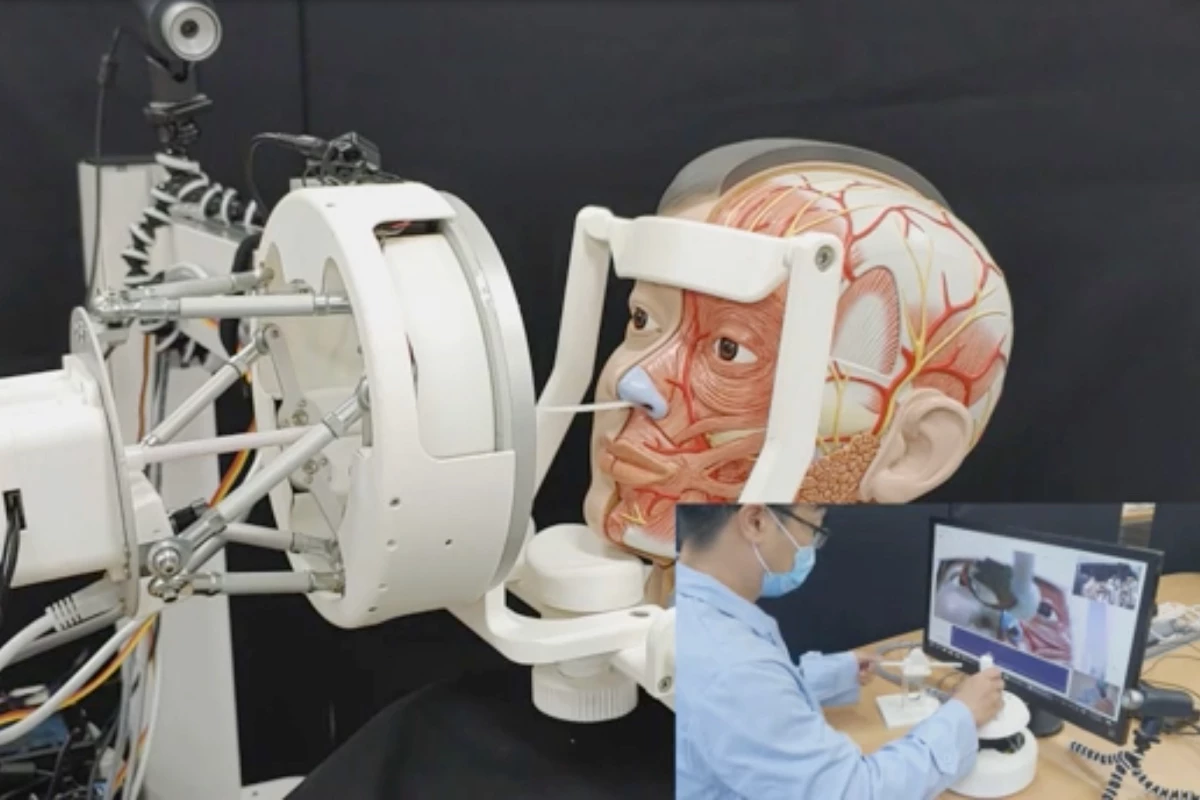Even if they're wearing face shields and masks, healthcare workers can still understandably be quite leery of getting up close and personal with patients who may have COVID-19. That's where a new robotic system comes in, as it lets clinicians take samples at a distance.
Developed by scientists at the Korea Institute of Machinery & Materials (KIMM) and the Dongguk University College of Medicine, the prototype system consists of a computer-based set of controls in one area, and the actual robot in another. Patients seat themselves at the latter, utilizing a chin rest and forehead rest to properly position their head against the device.
Guided by real-time video from an attached video camera, the clinician then manipulates the controls, sending in the robot's disposable swab to obtain samples from the patient's nose and mouth.

A joystick-like control moves the swab up and down, back and forth, while a sliding rod-shaped control is used to move it in and out. A force feedback setup in the second control replicates the resistance being experienced by the actual swab, so the operator knows not to apply too much pressure.
Additionally, should the patient and the clinician not be in the same room, an integrated audio-visual system allows them to communicate with one another.
"This technology allows samples to be retrieved from persons presenting symptoms of high-risk diseases even without direct contact," says KIMM's Dr. Joonho Seo. "I expect it to be useful in the screening of high-risk diseases like COVID-19, and hope it will contribute to the safety and well-being of medical personnel during pandemics and epidemics."
You can see the system in use (on a dummy head), via the second link below.
Source: National Research Council of Science & Technology via EurekAlert




